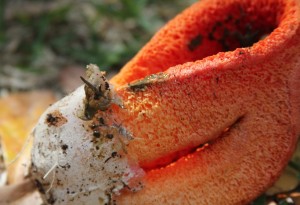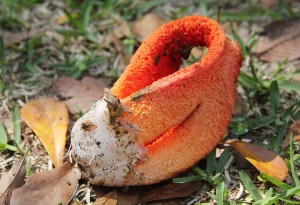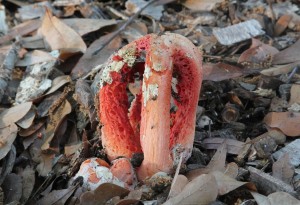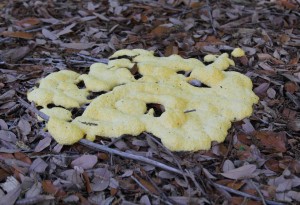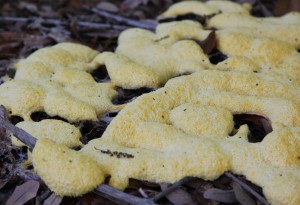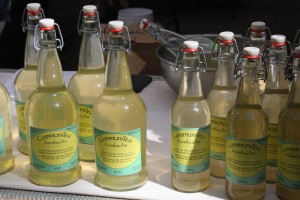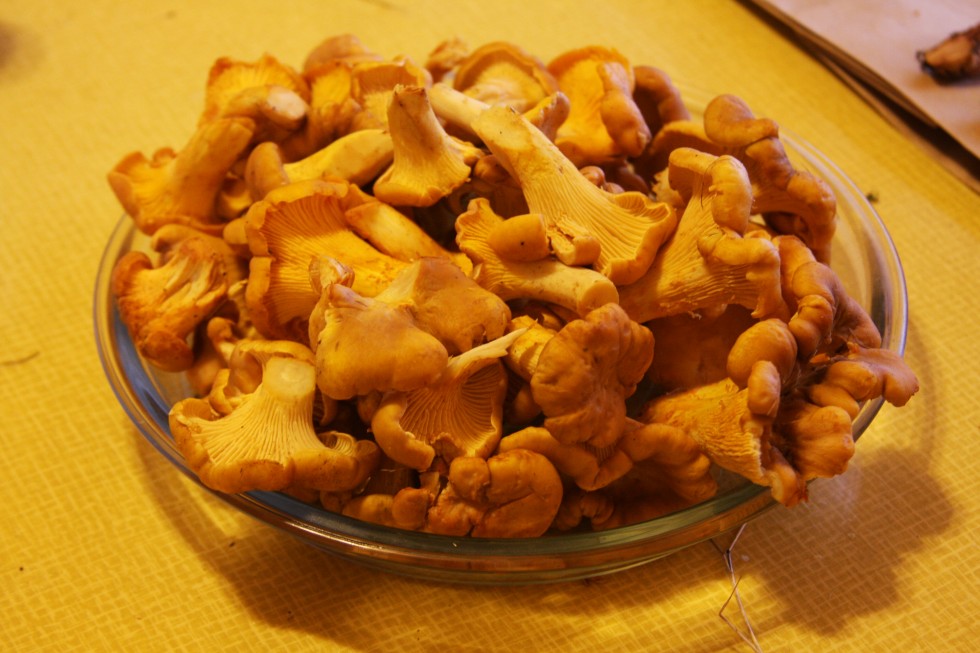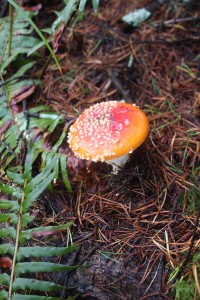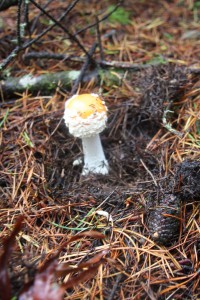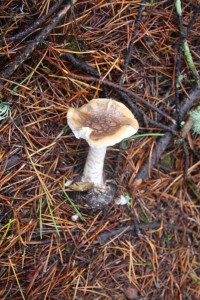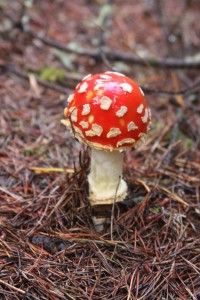A stinkhorn smells like a rotting carcass, and brown goo seeps from its pores and attract flies to the inside of its cage-like structure to spread its spores. A marvel of nature, the stinkhorn is disturbing to many park users because its smell penetrates a large area. Rebecca found one of these while walking Shadow in Hampton Park early in the spring and brought it back to the house where it stunk up the yard for a few hours, but quickly shriveled up. Another one popped up later in the park that she was able to photograph in its location. She remembers finding these in her hometown of Florence.
